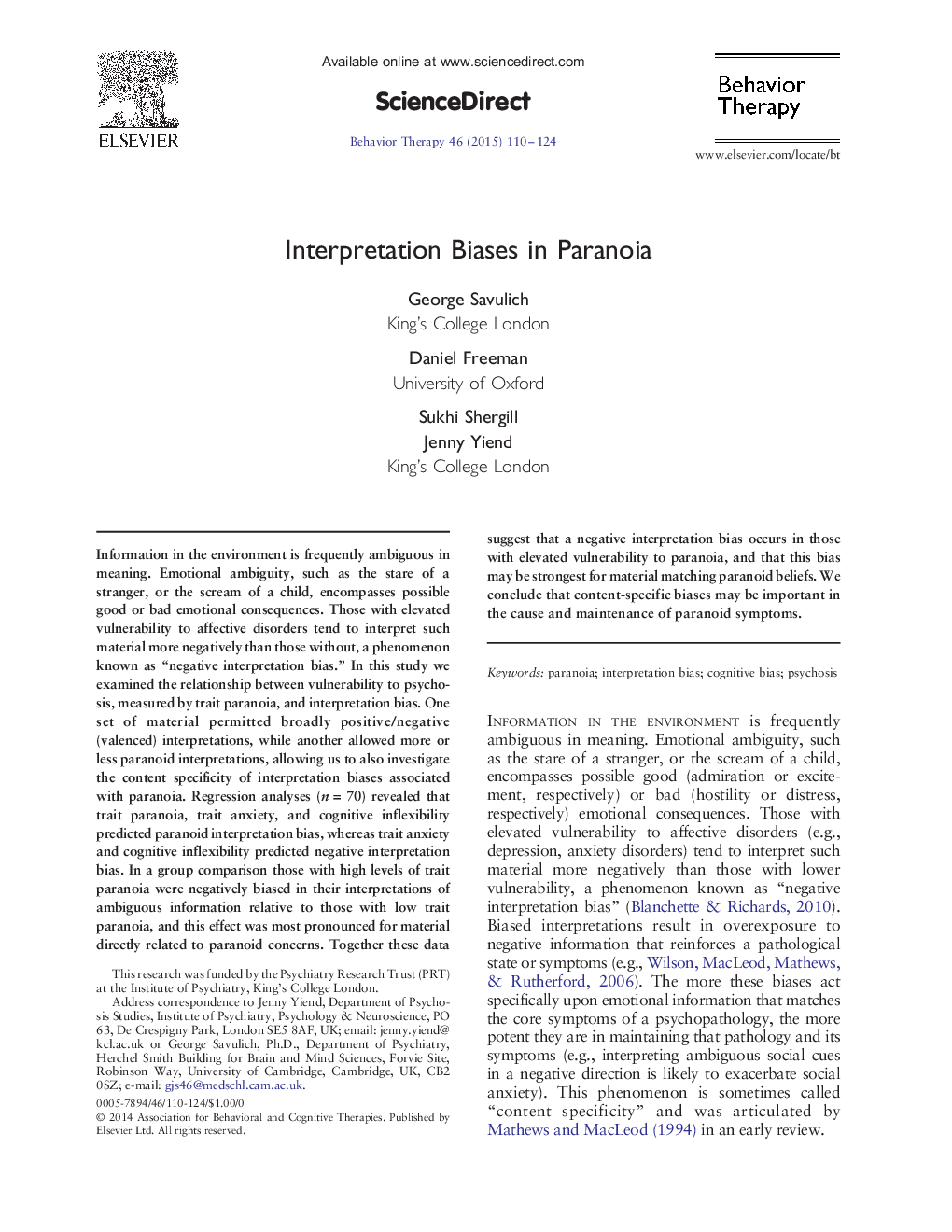| کد مقاله | کد نشریه | سال انتشار | مقاله انگلیسی | نسخه تمام متن |
|---|---|---|---|---|
| 901203 | 915851 | 2015 | 15 صفحه PDF | دانلود رایگان |
• Individuals with high levels of trait paranoia interpret ambiguous social information in a negative manner.
• Negative interpretation bias may be strongest for material matching paranoid concerns.
• Trait paranoia, trait anxiety, and cognitive inflexibility predict paranoid interpretation bias.
• Trait anxiety and cognitive inflexibility predict negative interpretation bias.
Information in the environment is frequently ambiguous in meaning. Emotional ambiguity, such as the stare of a stranger, or the scream of a child, encompasses possible good or bad emotional consequences. Those with elevated vulnerability to affective disorders tend to interpret such material more negatively than those without, a phenomenon known as “negative interpretation bias.” In this study we examined the relationship between vulnerability to psychosis, measured by trait paranoia, and interpretation bias. One set of material permitted broadly positive/negative (valenced) interpretations, while another allowed more or less paranoid interpretations, allowing us to also investigate the content specificity of interpretation biases associated with paranoia. Regression analyses (n = 70) revealed that trait paranoia, trait anxiety, and cognitive inflexibility predicted paranoid interpretation bias, whereas trait anxiety and cognitive inflexibility predicted negative interpretation bias. In a group comparison those with high levels of trait paranoia were negatively biased in their interpretations of ambiguous information relative to those with low trait paranoia, and this effect was most pronounced for material directly related to paranoid concerns. Together these data suggest that a negative interpretation bias occurs in those with elevated vulnerability to paranoia, and that this bias may be strongest for material matching paranoid beliefs. We conclude that content-specific biases may be important in the cause and maintenance of paranoid symptoms.
Journal: Behavior Therapy - Volume 46, Issue 1, January 2015, Pages 110–124
